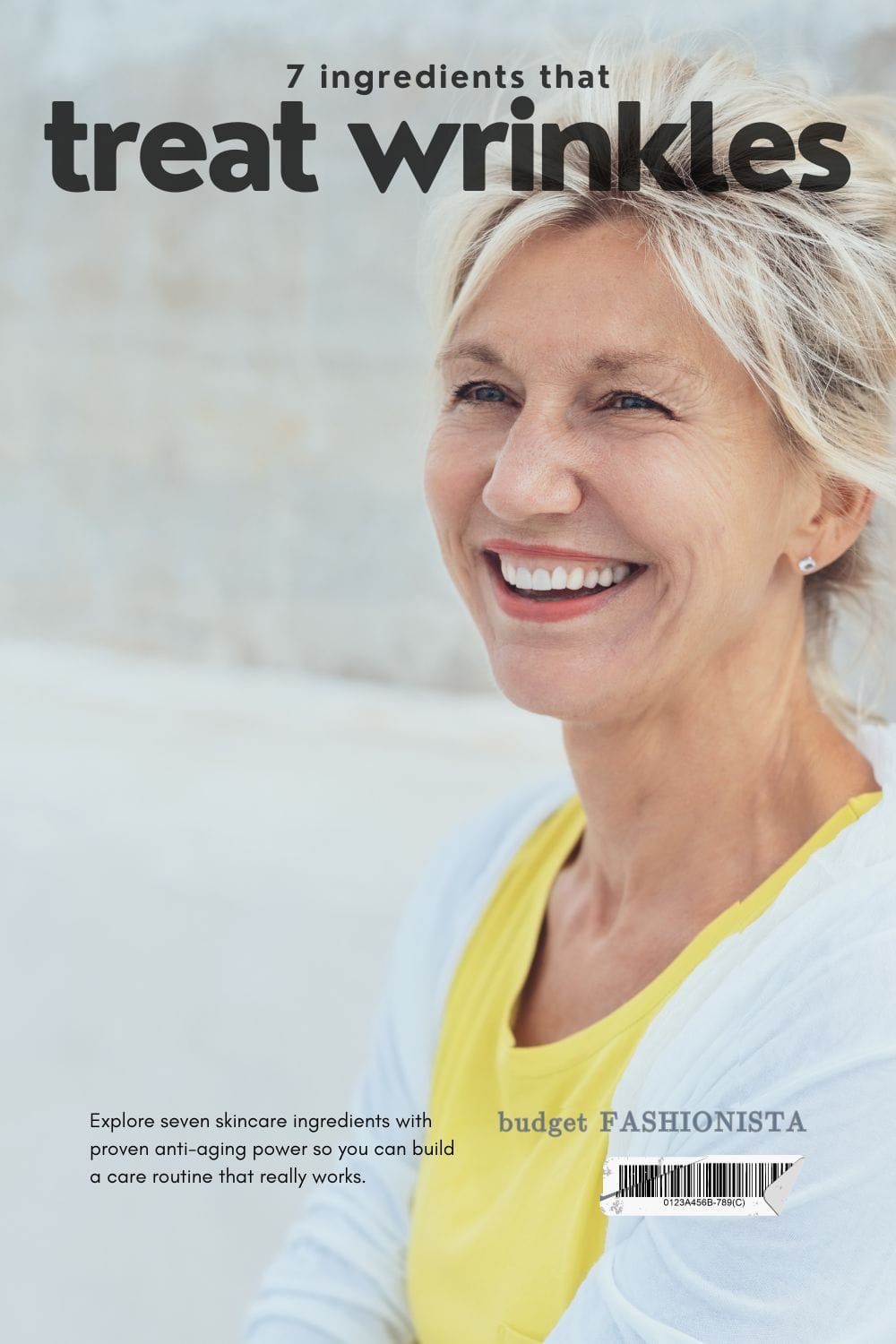
Steve Miller Band said it best: “Time keeps on slippin’, slippin’, slippin’ into the future.” And with the passing of time, we see changes in our skin — unwelcome changes like wrinkles, sagging, and dark spots.
These aging-related changes are natural and, to some extent, unavoidable. But that doesn’t mean we must accept them without a modest fight. By modest, I mean investing in an affordable skincare routine based on ingredients proven to hydrate, exfoliate, fight free radical damage, and even skin tone.
The challenge in making that investment is deciding which ingredients are worth your dollar. There are many options, from proprietary compounds to all-natural elements that sound like they belong in a power smoothie rather than your moisturizer.


To scale back the range of prospective products to a manageable level, let’s explore seven popular skincare ingredients with proven anti-aging power.
Hyaluronic acid
- What it does: Improves texture, fights against free radicals, hydrates, supports wound healing
- How to buy: Look for topical products with multiple types of HA molecules, such as hydrolyzed hyaluronic acid, sodium hyaluronate, and Lactococcus/hyaluronic acid. One study also supports the use of oral hyaluronan to treat wrinkles.
- How to use: Apply a hyaluronic acid (HA) serum to clean, damp skin and follow with a moisturizer. You can also use an HA serum after micro-needling.
Hyaluronic acid (HA) is a humectant, so it pulls water into your skin. That hydration boost has a plumping effect, which can counter fine lines and sagging skin. Additionally, HA is safe and gentle enough to use daily.
Ceramides
- What it does: Prevents water loss, fights against irritants
- How to buy: Ceramide NP and ceramide EOP have clinically documented efficacy. One study concluded that formulas with a single ceramide are more effective than formulas with two ceramides.
- How to use: For maximum hydration and skin protection, apply a fragrance-free ceramide cream before bed. You can team a ceramide cream with an HA serum.
If your skin seems to be getting drier with age, declining ceramides could be the culprit. These natural lipids have the job of maintaining your skin’s moisture barrier so your skin stays hydrated.
Ceramides, like HA, are safe and gentle enough to use daily and on delicate areas, such as under the eyes.
Retinol
- What it does: Exfoliates and increases collagen production to reduce appearance of lines and wrinkles
- How to buy: Choose a concentration that fits your goals and skin sensitivity. For sensitive skin, stay with 0.03% or less. For maximum efficacy with the risk of irritation, opt for up to 1% retinol.
- How to use: Start with a low-concentration formula, applied three times weekly, to see how your skin reacts. Avoid the under-eye area unless the product is specifically formulated for delicate skin. Increase the frequency of applications slowly. Once you are using the product daily without irritation, you can consider moving to a higher-concentration formula.
Retinol is an over-the-counter cousin to prescription-only tetrinoin. It is less potent than tretinoin and less irritating. In my experience, that is a good thing. I briefly tried tetrinoin and found the irritation to be too much to handle.
Ferulic acid
- What it does: Supports more even skin tone, calms skin, improves efficacy of other antioxidants, including Vitamin C
- How to buy: Typical concentration is 0.5% to 3%. Product packaging should be opaque.
- How to use: Apply ferulic acid serums to clean skin and follow with moisturizer and then sunscreen. You can alternatively skip the serum step by investing in a moisturizer that includes ferulic acid, such as Intense Wrinkle Cream by drdennisgross.com.
Ferulic acid is a natural antioxidant found in plants, including fruits, vegetables, and grains. Because this ingredient helps other antioxidants work better, it’s often combined with Vitamin C, Vitamin E, or retinol. Some of these formulas can be pricy, but there are affordable options too.
Lactic acid
- What it does: Hydrates, exfoliates, and firms
- How to buy: Choose products with 10% concentration for maximum benefit.
- How to use: Lactic acid isn’t aggressively irritating, but it can be harsh on sensitive skin. For that reason, start out using it a few times weekly rather than daily. And avoid combining lactic acid with scrubs or retinol. Apply at night, followed by a moisturizer. Wear sunblock during the day.
Lactic acid is an alpha hydoxy acid (AHA) that comes from milk, lactose specifically. Vegan skincare products instead use fermented corn starch or beets, according to Sephora.
Vitamin C
- What it does: Defends against UV damage, evens skin tone, smooths wrinkles, speeds collagen production
- How to buy: Opt for concentration of 8% to 15% with a pH of 3.2 or lower. This combination can stay active on your skin for several days, so you don’t need to use it daily, ultimately reducing the cost. Packaging should be dark or opaque to avoid oxidation.
- How to use: Apply Vitamin C serum after cleansing and before moisturizer and sunscreen.
Vitamin C oxidizes easily when in contact with light or air. An oxidized product should not hurt your skin, but it will change color and lose efficacy. Before buying, check to see if the product has a “use within” data and make sure you can comply. Store your Vitamin C product in a cool and dark place.
Omega fatty acids
- What it does: Soothes irritated skin, hydrates, and protects against UV damage
- How to buy: Look for products that combine omegas 3, 6, and 9s in one formula.
- How to use: Omega fatty acids are gentle enough to use without worrying about ingredient interactions or timing of application. They come in both serums and moisturizers so it’s best to follow the product instructions.
Alpha-linolenic acid, linoleic acid, and oleic acid are all omega fatty acids. You can find these ingredients in many formulations, including moisturizers that also have nourishing ceramides.
Note that some oils containing fatty acids can clog pores. If you’re prone to acne, avoid omega products that contain olive oil or rosehip oil.
Your best anti-aging regimen
You can combine these seven anti-aging skincare ingredients to build a routine that addresses your top beauty worries and is suitable for your skin type too. If new ingredients tend to cause you irritation, for example, you might want to team hyaluronic acid, ceramides, and omega fatty acids, with an occasional dose of lactic acid. For maximum results, try retinol, ferulic acid, and a nourishing dose of ceramides.
With that, I’ll leave you with a “doo doo doo-doo” to keep things upbeat for the rest of your day.
PSA. It’s time to dump Google and switch to Ecosia. Get answers faster and make the world a better place. Download the Ecosia iOS app and make Ecosia.org your browser’s homepage.




